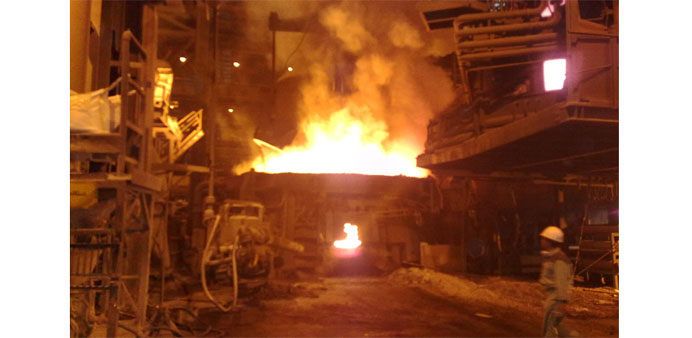BHP, Australian rivals raise iron ore output targets
Post Date: 21 Apr 2014 Viewed: 429

Australian miners are racing ahead with plans to expand iron ore production to capture more of the Chinese market for the steelmaking ingredient, amid strong competition from the world's biggest supplier Vale of Brazil.
Efforts to beat already ambitious output targets come as a crackdown in China on using commodities as collateral to raise cash risks unleashing iron ore sales from tens of millions of tonnes sitting in Chinese port warehouses, pressuring prices.
Fortescue Metals Group, which is raising production 57% this year, says its needs iron ore prices to stay between $110-$120 a tonne for the next 12-18 months in order to pay off a targeted $2.5bn in debt.
The Australian Bureau of Resources and Energy Economics forecast an average price of $110 a tonne this year but only $103 a tonne in 2015. By 2016, Citigroup sees the price falling to $80.
BHP, the world's biggest diversified mining company, lifted full-year iron ore production guidance by 5mn tonnes to 217mn as it pushes ahead with new mine work in Australia.
That's still behind Australian rival, Rio Tinto , which is close to mining 300mn tonnes a year and Vale, which is targeting annual output of more than 360mn tonnes, with longer term plans to exceed 400mn.
China imports more than a half billion tonnes of iron ore annually to supplement domestic production of mostly lower-grade ore. China's crude steel production rate of some 2mn tonne a day makes it by far the world's biggest consumer of iron ore.
Output from BHP's most profitable division rose 1% to 49.6mn tonnes in the three months ended March 31 versus the previous quarter – above forecasts, according to Macquarie Bank.
Against the same quarter last year, output was up 23%, data from BHP's quarterly production report showed.
BHP Chief Executive Andrew Mackenzie said the lift in output was helped by a limited impact from heavy rains in Australia's Pilbara iron ore belt in January and expansion work underway at the company's new Jimblebar mine.
Rio Tinto this week blamed an 8% fall in quarterly iron ore shipments on rains and winds from cyclone Christine that disrupted its transport and shipping operations.
That is unlikely to occur again in the current quarter, one of the driest each year in the Pilbara.
Fortescue Chief Executive Nev Power has set a target of producing 41.6mn tonnes in the current quarter, 10.1mn tonnes up on the previous quarter, the vast majority for sale to Chinese steel mills.
He said any release of stockpiled iron ore in China would act as a short-term weight on prices, at best, given the country's rapacious appetite for imported ore.
"While there might be some short-term volatility in the price from a major release from the port stocks, it's not going to last very long," Power told reporters on a conference call, noting that 30mn tonnes represented only about seven or eight days consumption in China.
Commodities such as copper and rubber have been commonly used for financing, where traders or investors borrow against the commodity with the aim of investing the money in high-return areas such as real estate.
But Beijing's efforts to tighten credit have spurred investors desperate for cash to turn to iron ore. Industry sources familiar with the practice estimate some 30mn tonnes, or $3.5bn worth, of stocks are now tied up by financing.
Vale is due to release first quarter production and financial reports on April 30.



